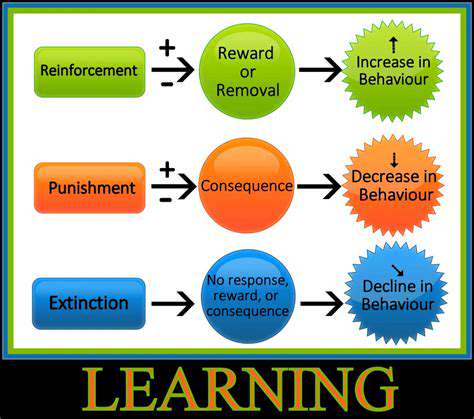Building Emotional Connections Through Parent Child Communication
Table of contents
- Creating safe spaces enhances children's emotional regulation and communication.
- Parental consistency builds trust and encourages open conversations.
- Active listening strengthens emotional connections between parents and children.
- Engaging in activities promotes emotional expression in children.
- Open-ended questions deepen dialogue and critical thinking.
- Empathy fosters strong parent-child relationships and emotional security.
- Daily conversations can incorporate emotional check-ins for better communication.
- Regular check-ins enhance parent-child engagement and understanding.
- Modeling healthy communication behaviors aids children's social skills development.
- Setting clear boundaries provides security and respect in communication.
- Providing constructive feedback encourages a growth mindset in children.
- Adapt communication styles to suit a child's developmental stage.
Create an Open and Safe Space for Dialogue

Understanding the Importance of Safe Spaces
Creating a space where children feel secure to express their thoughts is essential for healthy communication. A study conducted by the American Psychological Association reveals that children who feel safe to share their feelings have better emotional regulation skills. These environments encourage honest dialogue and foster trust between parents and children. As a parent, understanding this principle can profoundly impact your relationship with your child.
Children are more likely to open up when they sense that their emotions and thoughts are valued. It’s crucial to emphasize that feeling safe does not only apply to physical surroundings but extends to emotional security as well. This emotional backdrop allows for authentic exchanges that can strengthen interpersonal bonds.
Establishing Trust Through Consistency
Consistency plays a pivotal role in establishing trust within the parent-child dynamic. By maintaining consistent responses during conversations, parents can reinforce the idea that their children can rely on them. A research article from the Journal of Child Psychology and Psychiatry notes that consistency in communication helps children internalize trust and can improve their mental health. For example, regularly scheduled family meetings can provide a predictable platform for Open Dialogue.
Moreover, when parents follow through on their promises, it builds credibility. Children learn to equate open communication with reliability, thus encouraging them to share their thoughts and feelings more freely. This cycle of trust is fundamental for nurturing strong emotional connections.
Active Listening: A Cornerstone of Communication
- Active listening involves genuinely comprehending what your child is saying.
- It includes verbal affirmations and non-verbal cues, which validate their feelings.
- This practice can significantly enhance emotional connectivity between parents and children.
Active listening is an invaluable skill for Effective Communication. When parents actively engage with their children’s conversations, it shows that their opinions matter. This level of involvement not only increases the likelihood of children opening up but also fosters empathy.
By responding thoughtfully and acknowledging your child's feelings, parents can create a culture of open dialogue. Studies indicate that Active Listening leads to improved problem-solving abilities in children. Hence, equipping them with these critical skills is essential for their development and well-being.
Encouraging Emotional Expression Through Activities
Incorporating various activities can facilitate Emotional Expression between parents and children. Consider engaging in arts and crafts, which provides children with a non-verbal outlet to communicate their feelings. Research shows that artistic expression can significantly reduce anxiety and improve emotional awareness, making it a useful tool for parents aiming to connect.
Moreover, discussing stories or books can open doors to deeper conversations about emotions. It allows children to reflect on their feelings in relation to characters, enabling parents to explore and understand their child’s emotional landscape. This method creates a less intimidating environment for children to express their innermost thoughts.
Fostering Open-Ended Discussions
Encouraging open-ended questions during conversations can significantly influence the quality of dialogue. Instead of asking questions that can be answered with a simple yes or no, try phrasing inquiries that require more elaborate responses. For instance, asking What was the best part of your day? invites children to share more in-depth insights.
This approach not only enriches conversations but also promotes critical thinking and reflection among children. A study in the Journal of Social and Personal Relationships supports that open-ended discussions lead to stronger emotional connections in familial relationships. By nurturing these skills, parents can help children articulate their feelings, thus building a more profound connection.
Practice Empathy and Active Listening

Understanding the Importance of Empathy in Communication
- Empathy strengthens connections between parents and children.
- Research shows that empathetic communication fosters emotional security.
- Teaching empathy can improve children's social skills and relationships.
Empathy is fundamental for effective communication within families. When parents demonstrate an understanding of their child's emotions, it not only strengthens the bond but also promotes a secure environment where children feel valued. According to studies conducted by the American Psychological Association, children who perceive empathetic responses from their parents are more likely to develop high self-esteem and greater resilience.
Building empathy involves not just understanding what your child feels, but also actively engaging with those feelings. For example, acknowledging a child's disappointment over a lost game, rather than dismissing it, validates their experience. Parents are often the first teachers of social skills; thus, their modeling of empathy can set the stage for how children interact with peers and authority figures in the future.
Practicing Active Listening Techniques
Active listening is a crucial technique that complements empathy and enhances parent-child communication. This involves giving full attention to your child, ensuring they feel heard and understood. Research from the National Institute of Child Health and Human Development indicates that active listening supports children's language development and helps them process their thoughts and feelings more effectively. Listening goes beyond hearing words; it’s about seeing the situation from their perspective.
Some practical strategies include maintaining eye contact, nodding affirmatively, and using verbal affirmations to show understanding. Reflective listening, where parents paraphrase what the child has said, can validate their feelings and encourage them to express more. A simple response like, “It sounds like you’re really upset about that,” can open the door for further discussion and deeper emotional exploration within the parent-child relationship.
Encourage Emotional Expression and Vocabulary
Understanding the Importance of Emotional Vocabulary
Emotional vocabulary refers to the range of words we use to express our feelings. It's not just about labeling emotions but understanding their nuances. Research indicates that children with a richer emotional vocabulary are better equipped to communicate their feelings effectively. This can lead to healthier emotional development, as children learn to identify and articulate their emotions rather than suppress them.
Enhancing a child's emotional vocabulary lays the groundwork for meaningful discussions about feelings. Studies show that children who can express their emotions are more adept at managing conflicts, leading to better relationships with peers and family. As parents, you can significantly contribute to this development through daily interactions that emphasize feeling words.
Strategies to Encourage Emotional Expression
Creating an environment where children feel safe to express their feelings is crucial. Encourage open dialogues by regularly checking in about how they feel. For instance, asking simple questions like What made you happy today? or Did anything upset you? can prompt children to share their experiences and emotions without hesitation.
Use storytelling as a tool to encourage Emotional expression. Reading books with characters facing various emotions allows parents to discuss these feelings openly with their children. Asking them how a character might feel in a particular situation can foster empathy and emotional intelligence.
Moreover, modeling your own emotional expressions can guide children in identifying their feelings. Witnessing healthy emotional exchanges between parents can establish a standard for children to emulate, making it easier for them to express their emotions explicitly.
Incorporating Emotions into Daily Conversations
Daily conversations are excellent opportunities to weave emotions into discussions. Instead of asking generic questions about their day, incorporate emotional check-ins. Phrasing questions like, What was the most exciting part of your day? or Did anything bother you today? prompts children to think about their feelings and articulate them adequately.
Additionally, integrating emotions into everyday situations, such as discussing the emotional aspects of news stories or family occurrences, helps children become more aware of emotions in various contexts. Making emotional dialogue a part of family routines encourages kids to think critically about their feelings.
Using Creative Outlets for Emotional Expression
Encouraging children to express their emotions creatively can be incredibly beneficial. Art, music, and writing can serve as powerful tools for emotional expression. For instance, drawing pictures or writing stories about their feelings can help them process and communicate their emotions better. Family art projects or musical jam sessions can create shared experiences that facilitate emotional dialogue.
The Role of Cultural Sensitivity in Emotional Expression
It’s essential to recognize that cultural backgrounds can influence how emotions are expressed and understood. Some cultures encourage emotional restraint, while others promote openness. As parents, being aware of your child's cultural context can shape how you facilitate emotional expression. Cultivating an understanding of different cultural perspectives on emotions helps in approaching discussions sensitively.
Promoting cultural sensitivity around emotional expression allows children to appreciate diversity in emotional experiences. Engaging with various cultural narratives about emotions creates broader perspectives and enriches the child's understanding of human experiences.
Building Emotional Resilience Through Language
Empowering your child with emotional vocabulary not only helps them articulate their feelings but builds emotional resilience as well. Resilience is the capacity to recover from difficulties, and children with strong emotional expression skills are typically better at coping with challenges. Furthermore, encouraging them to discuss their trials openly supports this growth.
Encouraging children to explore emotions through discussion allows them to understand that it's normal to feel a myriad of feelings at once. By framing challenges as opportunities for learning and articulation, you help your child develop a constructive approach to handling difficult emotions, which is crucial for long-term emotional health.
Establish Regular Check-Ins
Define the Purpose of Check-Ins
Understanding the objective behind Regular Check-Ins is crucial for effective communication. Whether it’s to discuss school activities, emotional well-being, or general life updates, clear intent can guide the conversation. Establishing a purpose not only sets the tone but also creates a safe environment where the child feels valued and understood.
Research has shown that when parents articulate a specific purpose, children are more likely to engage meaningfully. This is particularly important during adolescence, a time characterized by significant emotional development and social change. Parents should tailor their approach based on the child’s age and maturity level.
Create a Comfortable Environment
A comfortable setting is essential for effective communication. Choose a quiet space where distractions are minimized, allowing both parent and child to focus on each other. It might be a cozy corner at home or a park on a sunny day; the key is to select a place that feels secure and encouraging for open dialogue.
The ambiance can significantly influence the exchange. For instance, utilizing casual prompts, like How's your week going? can help ease into the conversation without feeling forced. A relaxed setting encourages children to open up about their thoughts and feelings without fearing judgment.
Consider the physical setup as well—sitting at eye level with your child can foster a sense of equality and connection, making them feel more comfortable sharing their thoughts.
Establish a Routine
Creating a regular schedule for check-ins enhances their effectiveness. Consistency can lead to children perceiving these interactions as a normal part of life, akin to shared meals or family game nights. Ideally, aim for weekly or bi-weekly check-ins, depending on the family dynamics and children’s schedules.
For instance, setting aside time on Sunday evenings can provide a moment to reflect on the past week and plan for the upcoming one. This predictability allows for deeper conversations as children will often come prepared with topics to discuss, improving the overall quality of dialogue.
Encourage Active Participation
Encouraging children to take part in the conversation significantly improves engagement. Rather than dominating the dialogue, parents should ask open-ended questions to invite thoughts and feelings. Questions like, “What was the best part of your day?” or “What’s something that’s been on your mind lately?” can achieve this.
Making children feel heard is vital. Not only does it validate their feelings, but it also instills confidence in their ability to articulate thoughts. For effective participation, parents can model active listening behaviors such as nodding and repeating key points, which signals to the child that they are being taken seriously.
Use Technology Wisely
In today's digital age, technology can play a significant role in maintaining parent-child communication. Tools like WhatsApp or family group chats can facilitate check-ins even amidst busy schedules. Parents can send quick messages to check on their child's day, and children often appreciate the immediacy and accessibility of these platforms.
However, it’s essential to ensure that technology enhances rather than replaces face-to-face conversations. Set guidelines that prioritize in-person discussions for deeper conversations while utilizing digital tools for casual check-ins or quick updates.
Be Patient and Open-Minded
Patience during check-ins is vital. Children may struggle to express themselves or articulate their feelings, especially during adolescence when they experience overwhelming emotions. Parents should remain open-minded, allowing for pauses in conversations while the child gathers the words they need.
Engaging with empathy and affirming their feelings can make a significant difference. Phrases like “I understand this is tough for you,” can go a long way in making children feel validated and safe to share, helping bridge any communication gaps.
Evaluate and Adjust as Needed
Regularly evaluating the effectiveness of check-ins allows parents to make necessary adjustments. Consider seeking feedback directly from your child about what they enjoy or what could be improved. This dialogue sends a powerful message that their opinions matter and prompts parents to refine their approach.
Research suggests that adaptability in communication styles can significantly enhance the parent-child relationship over time. Parents should be willing to embrace changes, whether it involves trying new conversation topics or varying the format of the check-ins, such as incorporating activities like cooking together while chatting.
Model Healthy Communication Behaviors
Establish Open Dialogue
One core element of effective parent-child communication is the establishment of an open dialogue. Parents should initiate conversations by asking open-ended questions that encourage children to express themselves. For example, instead of asking Did you have a good day? a more effective approach would be What was the most interesting thing that happened today? This conversational style promotes a two-way interaction where children feel their opinions and experiences matter.
Research shows that children who engage in open dialogue with their parents perform better academically and exhibit improved emotional intelligence. A study published in the Journal of Child Development highlights that effective communication fosters a secure environment, empowering children to voice their thoughts and feelings comfortably.
Practice Active Listening
Active listening is a crucial skill for enhancing parent-child relationships. It involves fully concentrating on what the child is saying and responding thoughtfully. Parents should avoid interrupting and allow their children to speak without rushing their thoughts. This practice not only validates the child's feelings but also enhances their self-esteem.
Experts suggest that using reflective statements, such as It sounds like you are really excited about your project, can reaffirm the child’s expressions. This engaged response demonstrates to the child that their feelings are acknowledged and understood, which is foundational for building trust.
Encourage Nonverbal Expression
Nonverbal communication plays a significant role in how children express their emotions. Parents can model healthy communication behaviors by being aware of their own body language, facial expressions, and tone of voice. When children observe parents displaying open and positive body language, they are more likely to reciprocate similar behaviors.
Moreover, encouraging children to express their feelings through art or writing can complement verbal communication. Engaging in creative activities allows children to articulate complex emotions that they might struggle to verbalize. These alternative methods can also serve as valuable tools for parents to understand their children's emotional states better.
Incorporating nonverbal signifiers, like maintaining eye contact or nodding while a child speaks, reinforces the importance of feeling heard and seen.
Set Clear Boundaries and Expectations
Setting clear boundaries is essential in the framework of healthy communication. Parents should openly discuss family rules and the reasoning behind them, rather than imposing regulations without context. This transparent approach helps children understand the importance of boundaries, encouraging them to respect both their own limits and those of others.
Be specific about expectations and consequences for behavior. Children thrive when they know what is expected of them and understand the rationale behind those expectations. A consistent approach instills a sense of security and predictability in their lives.
Provide Constructive Feedback
Constructive feedback is key to nurturing a child's growth and development. When providing feedback, it is vital for parents to focus on the behavior rather than labeling the child. For instance, saying I noticed you struggled with your math homework is more effective than You're not good at math. This method fosters an environment where children can view mistakes as learning opportunities rather than failure.
Additionally, constructive feedback should be balanced with affirmation. Recognizing a child's efforts, even if the outcome isn't perfect, encourages resilience. Research indicates that children who receive balanced feedback develop a growth mindset, which motivates them to persevere in the face of obstacles. When children feel they are still valued amidst challenges, they are more likely to continue trying.
Adapt Communication to the Child's Developmental Stage
Effective communication should be adaptable to a child's developmental stage. Younger children may benefit from straightforward, simple language and visual aids, while teenagers might require deeper conversations that respect their growing independence. Tailoring communication to a child's age and maturity level enables parents to foster more meaningful interactions.
Studies in developmental psychology suggest that parents who adjust their communication style based on their child's stage are more likely to engage in productive conversations. This not only aids in comprehension but also helps in building an emotional bond that evolves with the child's needs. Parents should continually seek to understand and align their communication techniques with their child’s developmental milestones.
Recognizing that children evolve over time is essential, as adapting one's communication strategies can yield long-term benefits in their social and emotional development.
Read more about Building Emotional Connections Through Parent Child Communication
Hot Recommendations
- Affordable Early Childhood Education Solutions
- How to Share Parenting Responsibilities Equally
- How to Identify and Address Teen Depression Early
- How to Teach Kids Emotional Awareness
- Strategies for Cultivating Emotional Intelligence in Early Childhood
- Step by Step Early Childhood Education Guide
- Balancing Parental Roles: Strategies for Effective Co Parenting
- How to Use Positive Language for Better Child Behavior
- How to Create a Distraction Free Study Environment
- Understanding Teen Behavior: Counseling Tips for Parents






